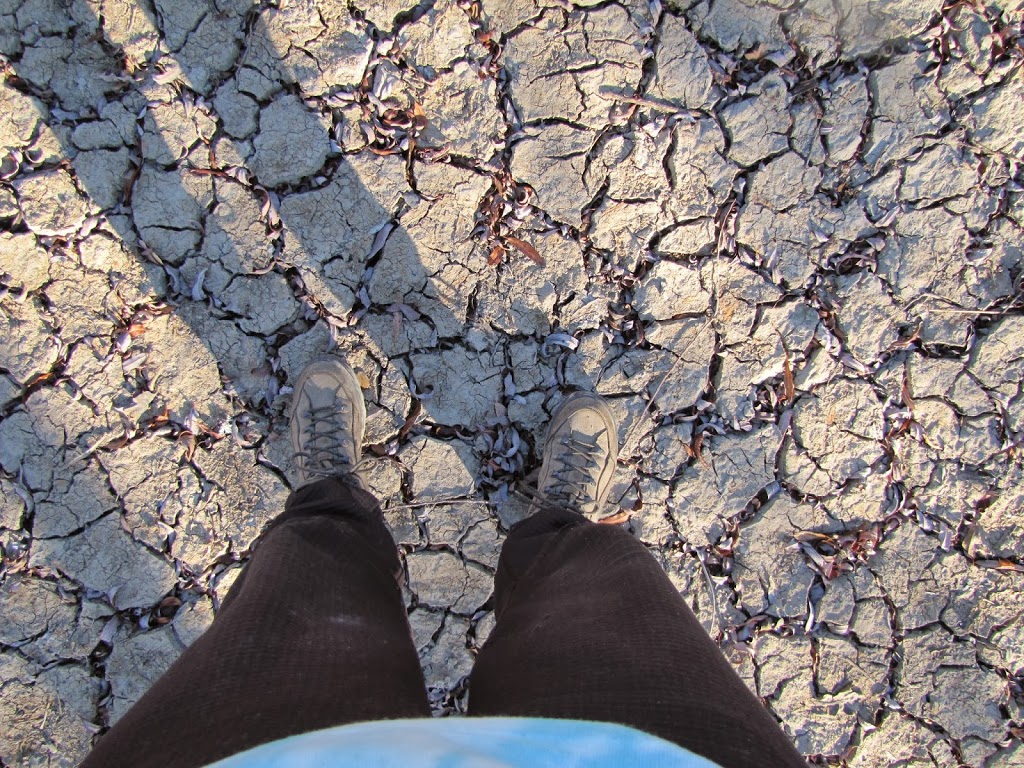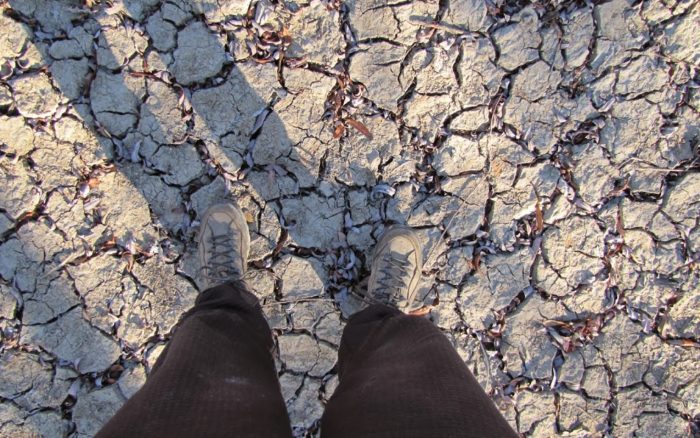 |
| Pond Bottom, January 2014 |
Dark Gifts of Drought
Donald says that he remembers a year when the hills did not turn green. He was forced to pump water from the lower pond, which fills first and quickly, to the upper, much larger pond, to capture and save what rain water he could.
This has not happened in the 20 years that I have lived on our ranch, but I do remember drought years in the late ’80’s, and some before in the mid ’70’s. We were living in Marin County at the time, and the reservoirs went dry. We were put on water rationing, only 40 gallons per person per day. Large pipes were laid on the Richmond Bridge to bring water across the bay. We quickly learned to live an examined life when it came to water usage: to flush the toilet for solid waste only, to save grey water from the house to flush the toilet and to water outside plants, to plant only drought tolerant plants, to put on reduced-flow shower heads. We never let water run in the sink when we brushed our teeth or rinsed dishes. When it rained again, we continued some of these habits, but mostly, over time, many of us went back to our old ways.
We live in a Mediterranean climate in northern California. Our 20 to 40 inches of rain come between October and April. The rest of the year is dry. Native plants depend on this rhythm, with some species of oaks dying if they receive summer irrigation. In our farming, rain in the summer is a problem for the grapes, supporting mildew and botrytis. We depend on the reservoirs to provide water for the limited irrigation we do. Biodynamics practices have improved the soil enough that we can almost dry farm the grapes.
But what happens if there is only a few inches of rain in the winter? Besides the health of the trees and the increasing fire danger (this January day is a red flag day until 1 pm due to dry winds), what does it mean? Across the valley resounds the pounding of drilling rigs. Wells have gone dry and for some, there is not water for household use.
It is easy to fear the worse: this is global warming and this is how it is going to be. It could be part of the natural cycle of drought and then flooding, which often follows.
But we also know, droughts are intensified by the particulates of pollution. Rain simply doesn’t reach the ground. And the weather is becoming increasingly erratic everywhere. The pattern that we have depended upon may not be the pattern that sustains us into the future.
Dennis Klocek, philosopher, climatologist, and scientist, states that key to any shift in our relationship to the earth is acknowledgement of our vulnerability to the earth (Climate: Soul of the Earth, Lindisfarne Books, 2011.) Our old stance of dominion over and our work to subdue nature, seeing the earth as only a resource for our own use and not as a living being in her own right, has brought us to where we are now.
What changes come when we address the earth as She? How do our actions change if we consider all who also live on Earth, humans and animals, plants, and minerals, as living beings with rights to exist of their own?
Drought reminds me of the sacredness of water, of its importance for life, and of the ways that I have taken its abundance for granted. It is the dark gift of this time that I again become mindful of my relationship to water and to the Earth.
